|
Interpreting
Nineteenth century impressions of transformations of America's national scenery
due to mechanization from Thomas Jefferson to Theodore and Franklin Roosevelt,
reveals a distinct bias. This bias in favor of rural countrysides was only reversed by Theodore Roosevelt.
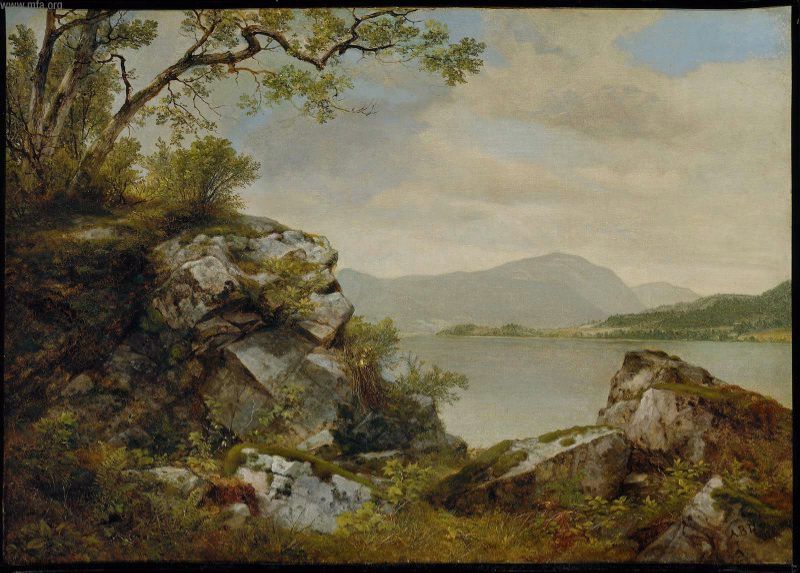
Asher B. Durand's Lake George. 1860. Oil on canvas: Museum of Fine Arts Boston {Asher Brown Durand, American
A# 47.1233.}
Through conservation and
the City Beautiful movements a tension that is best described as a tolerable ambivalence
about the countryside as opposed to the city arose as part of the national sentiments about landscape.

|
| The identification of moral impulses with our landscape is a prominent, prevailing, and persisting feature of American thought. |
|
Virtue
|
Evil
|
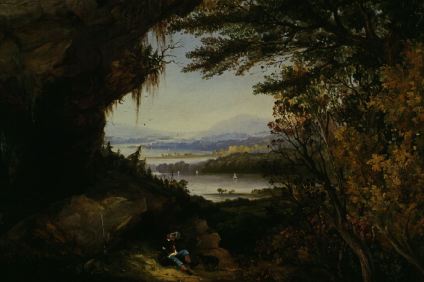
|

|
| The Hudson River at Storm King from the Catskill Mountains. |
The San Fernando valley from the air. |
explanation
| contributions
Our nation
sought
to define its cultural identity with respect to nature,
(Asher B. Durand's Lake George) because it was widely believed in the eighteenth and nineteenth centuries by
Americans that there was no ancient heritage, of any value, here and –insisted
the Europeans– that the new world was inferior, naturally to Eurasia and
Africa.
For example
there was an absence of large mammals in the America's to the extent one finds them in Africa.

Classical influences in architectural structures.
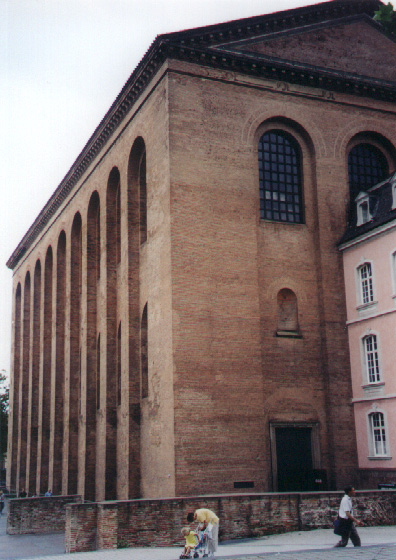
Emperor Constantine's Basilica
in Trier, Germany; one of three Roman Imperial capitals, circa 300 AD.
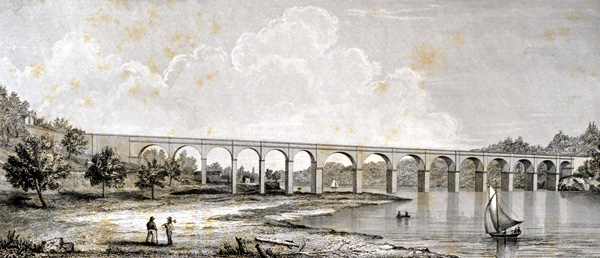
Croton
Aqueduct crossing the Harlem River into Manhattan. New York City.
• Retrogressive ideas in early colonial settlements
• Puritan attitudes about God, creation and paradise
• Naturalists redefine the character of life on earth
• Pioneers’ knowledge of soil, forests, springs and salt deposits
• Frontier violence and regeneration

What
were the contributions of romanticism to altering American attitudes
about wilderness from the earlier prevailing Protestant view of wild areas?

New England town
common, Manchester, Vermont.
How would you characterize the Puritan
attitudes about Indians and wild areas of the frontier?
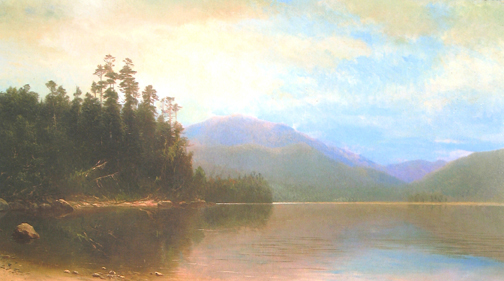
A wilder not quite pastoral scene
from Saranac Lake, in the Adirondack Mountains of New York, protected in 1885.
Such remote areas reinforced a vision of outdoor health, moral virtue, and cultural
coherence.
Next
| How
does Nash support his contention that concern for wilderness arose in
the urban environs of North America? |
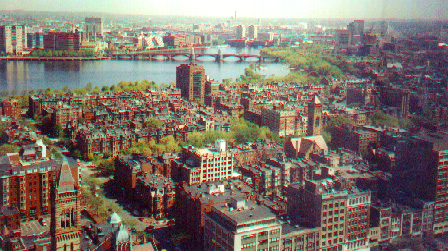 |
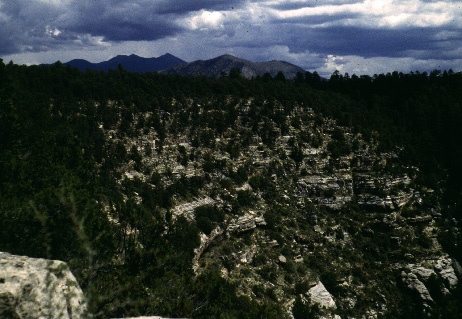 |
| Boston's Back Bay, was a tidal basin that was filled in
the nineteenth century from the surrounding hills to cover the mud bottom of the Charles River. |
San Francisco Mountains, from Walnut Canyon Arizona, the place where the Hopi Kachinas dwell all winter and return to nourish the people in the villages during the spring. |
Next
What does sublime mean?
| |
 |
 |
| |
The Orion nebula, |
Half
Dome in Yosemite valley |
Sublime: possessing a quality of such grandeur, magnificence, and excellence as to strike observers with a profound feeling of awe; or of overwhelming influence on any persons' sensibility.
Archaic
meaning: elevate to a high degree of moral or spiritual purity or excellence.
How did Gilpin’s idea of the picturesque
influence people’s ideas about landscape?
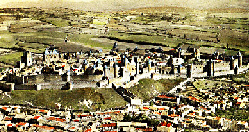
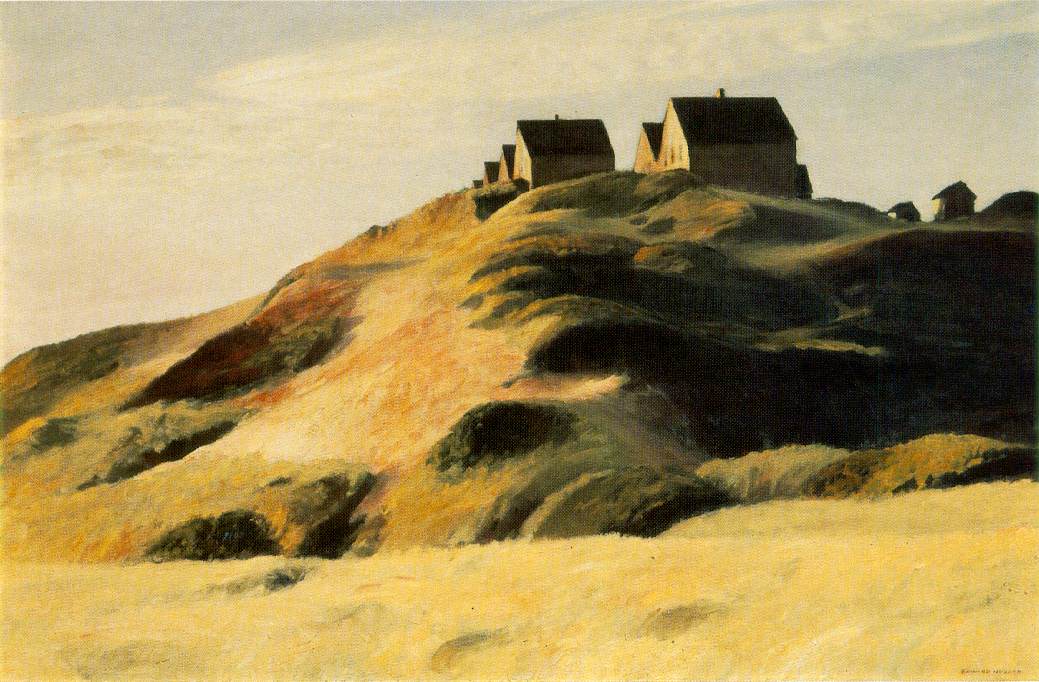
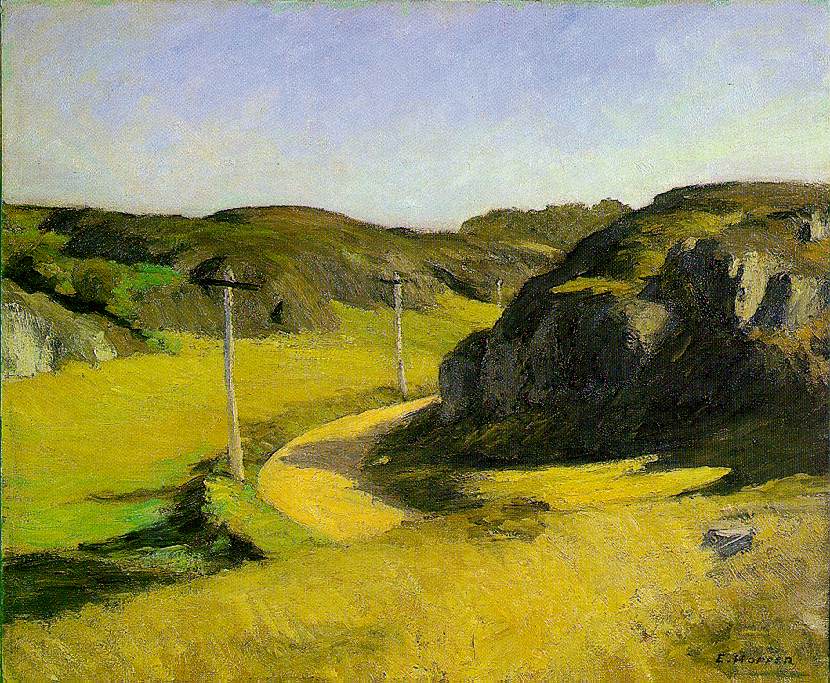
The medieval bastide
of Carcassone, France was restored to "picturesque" criteria in the 19th century. Compared to the early twentieth landscape painting of Edward Hopper who captured an American landscape of hills without defensive battlements and walls.
Picturesque --the term originated before photography meaning visually attractive, especially in a quaint, or pretty style, colorfully impressive, striking, delightful; sometimes too artfully so as to suggest a trite, --that is to say overused-- and thus less appealing, if not a slightly untrue representation.
real versus ideal
Next.

What are the sources of the dominant antipathy
Americans harbored for the wild frontier?
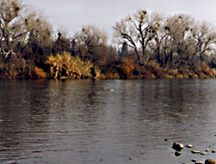
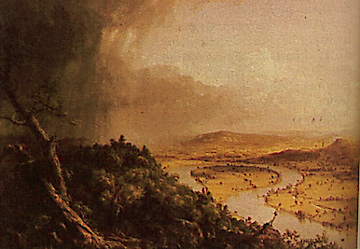
Levee on the Sacramento River
to control the annual flooding of the watershed: Thomas Cole's storm approaching an oxbow.
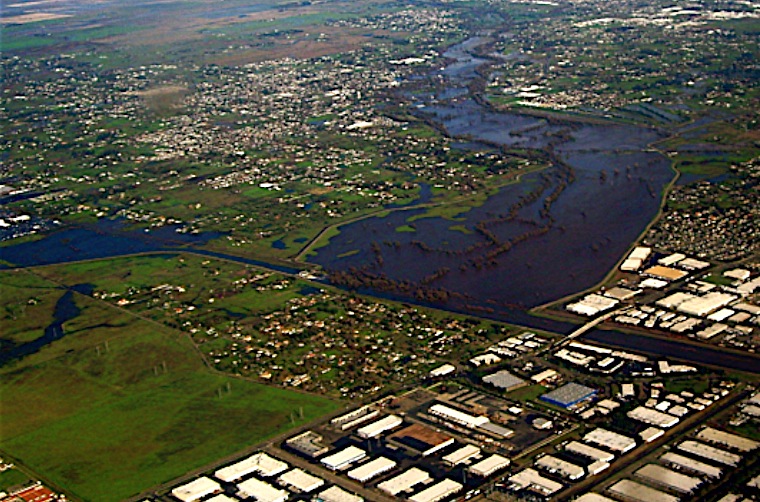
Flood waters overwhelm the levees on the Sacramento River, winter 2005-06 a heavy El Nino year.
Some answers.
Christianity saw wilderness as the testing ground for penitent and redemptive behavior.
The commercial challenges to have landscape sustain agriculture, lumbering, mining and settlements.
A need to secure resources for the mechanization and industrialization; the frontier became an unending source of mineral wealth.
Next.
Colonial attitudes were outgrown.
Evidence from photographic reality versus paintings as artistic expression reveals the progress and poverty of the national accomplishment in populating the countryside & settling the terrain in patterns indicative of our cultural landscapes.
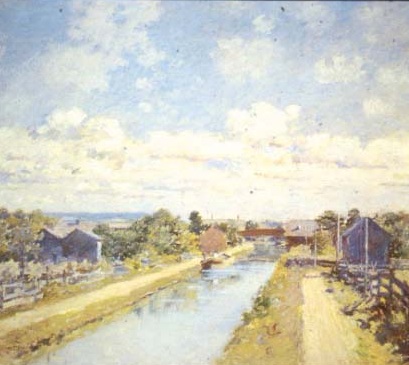
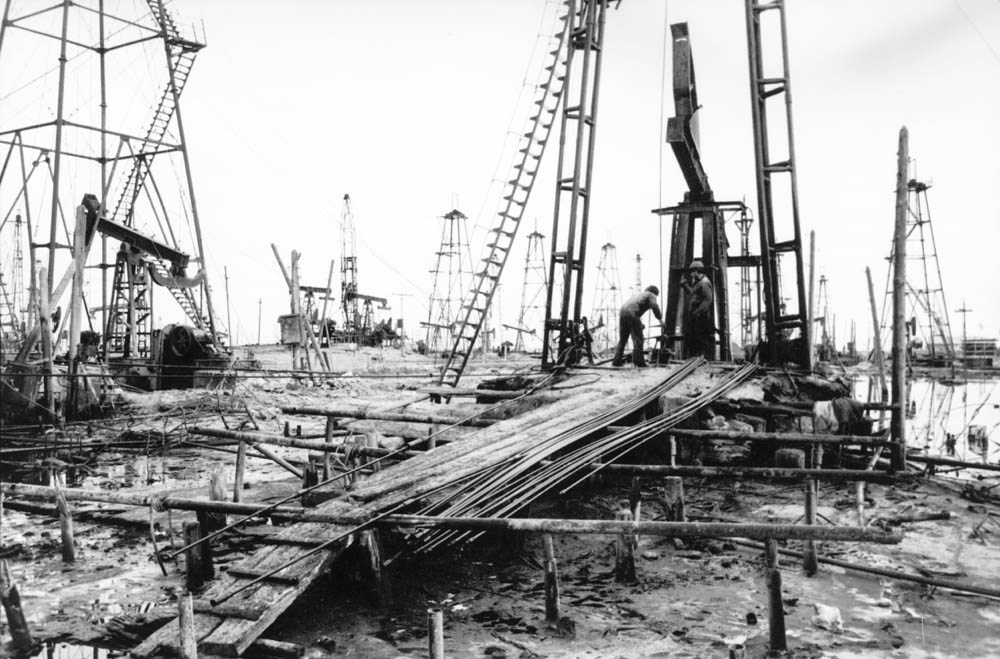
Delaware Canal as painted and photograph of oil fields.

In the New England, the Atlantic shore settlements, a Colonial respect
for European ideals all led to a radical departure in the new nation with respect
to land grants, resource use, and access to wealth.
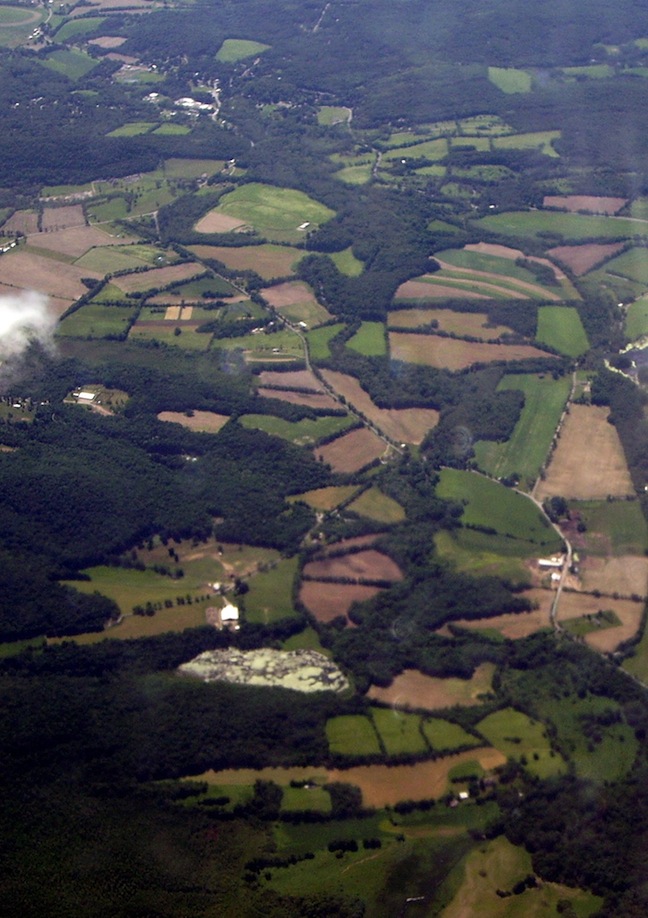
The
upper Hudson River Valley looking south from Albany, New York showing influences of 17th century Dutch land grants.
Next

English Post-Revolutionary (1649) worldview:
- John Locke's labor theory of value;
- "life, liberty and property." as the basis of responsible government
- priority of property
- land holders as voters: restrictions on the franchise.
- franchise is the right to vote, or suffrage.
- French physiocratic ideas -- land as the source of all wealth.
- Montesquieu's and Diderot's appeal to balance and reason.
- Rousseau's fundamental beliefs:
- wholesome, virtuous, goodness in the state of nature
- sanctity of rural property
- an appeal to the general will as a source of governing authority
- These ideas influenced Jefferson, who was the nation's ambassador to France and sought French royal support for American War of Independence from Great Britain.
Thomas Jefferson's Agrarian
Vision

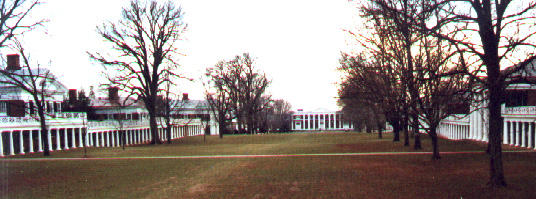
Jefferson's rationality and proportionality are
visible here in his design for the University of Virginia, shown above on the quadrangle
of the campus pictured prom two different perspectives. His respect for reason, order and classical design was to have a far reaching impact on the very shape of American settlement as his political beliefs had a symbolic influence on the national arguments over liberty, governance, property, and commercial expansion.
He had desired "A nation of free holders, sons and daughters of liberty stretched along the rivers and creeks for a thousand miles of democracy loving homesteads and hamlets where the distance among the classes was countered by their proximity to the soil which nourished the dreams of self-sufficiency, thrift and hard work". That was in sum the Jeffersonian hope as almost every policy he undertook to deal with the spread of the Napoleonic Wars (1803-1809) would ultimately undermine and overwhelm his trust in the decency and desirability of small town America.
J. V. Siry - Oct. 16, 2008.
Next.
Author of the Land Ordinance of 1785, Jefferson conceived of
a regularly ordered chessboard when he considered how to divide the nation's land and resources among its small farmers
to make them all "free holders" and keep them on the land.

The Township and Range system was adopted
by Congress (Articles of Confederation)
in 1785.
| The
Public Domain
was surveyed perpendicularly. |
|
 |
|
|
|
|
 |
The regularity
of the survey lines and the ability of the Land Office to dispose of parcels
in the Ohio, Mississippi, Missouri and other river valleys, appeared at
first to be an effective means of selling western lands to pay off the national
debt. |
| This checkerboard pattern created by the survey
system is still an influence on the national landscape: |
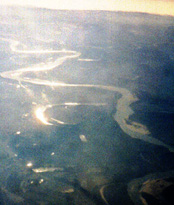 |
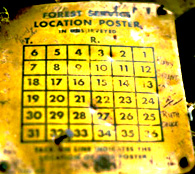 |
|
|
A rational plan for surveying
and selling western lands (one legacy of the 1785 law) is an American contribution
to agrarian reform and land-use policies in all western states except Texas.
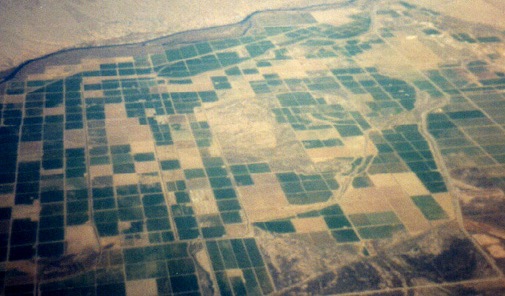
The Colorado River valley along the California and Arizona border.

Next.

The Aridity of
the far west meant there was little or no water for farming unless it was in
the mountains as shown here southeast of Santa Fe, New Mexico.

Where the grid pattern ends in the arid regions.
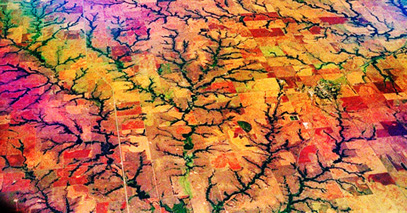
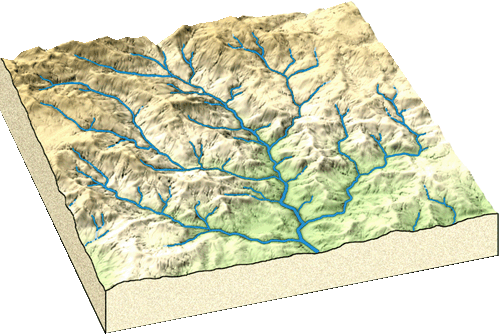
John Wesley Powell was one of the few national figures with vision to fully comprehend the necessity for changing our institutions to meet the perilous new demands of this far western frontier. He knew well that where arid deserts and semi-arid grasslands thrived, climate demanded a new kind of settlement based on a very different form of husbandry from what was widely practiced in the east between the Chesapeake Bay and the Great Plains and from the Gulf to the Great Lakes.
If the scenery didn't break down the restricted, parochial imagination of God-fearing republicans, surely the climate and weather would destroy their confidence in the land to sustain democratic institutions.
Next.
The Marble Canyon sector of the Grand Canyon National
Park in winter from an airborne perspective.
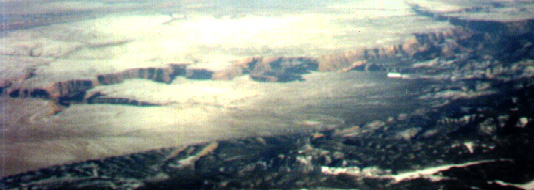
Immense vistas such as those discoverable in the Rocky mountains, on the great plains, Grand Canyon and the Great Basin led to the development of scenic monumentalism or an association of exceptionalism with the terrain and landscape features many artists found in the majesty and grandeur which is the western frontier.
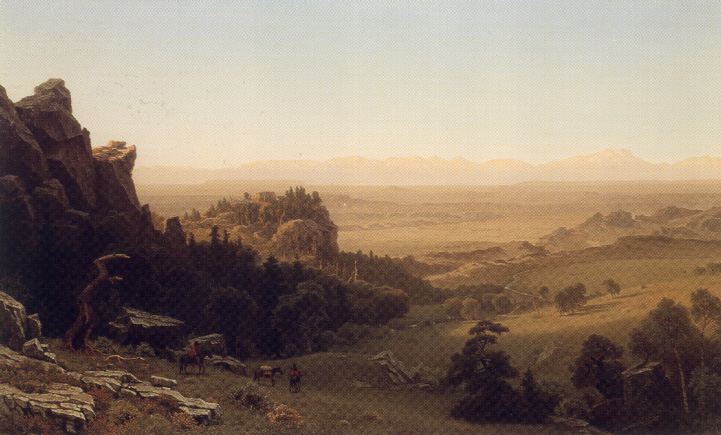
Albert
Bierstadt, The Wind River Range, 1860.

.gif)

Arid
regions | Austin | Leopold | Reisner
| Marx | Siry | Merchant
| Worster

![]()



























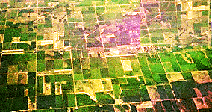


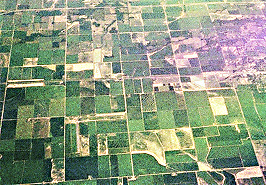


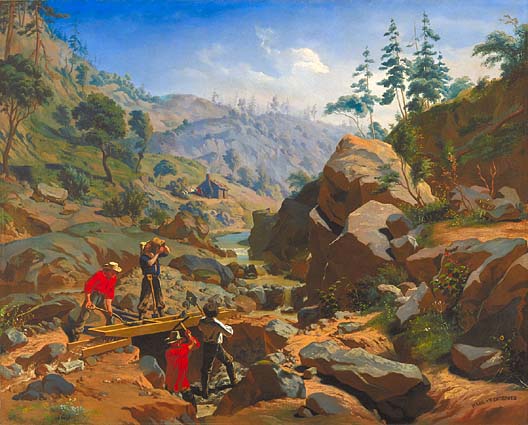





.gif)